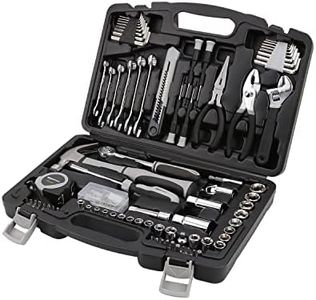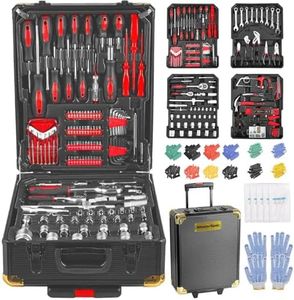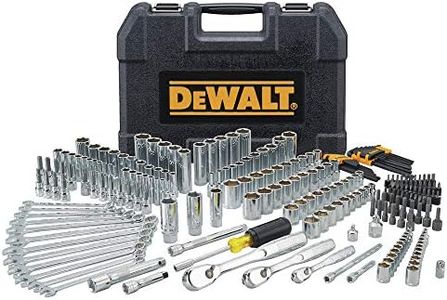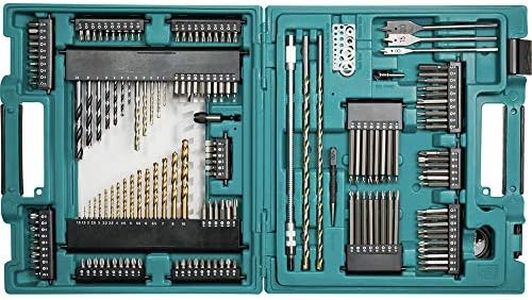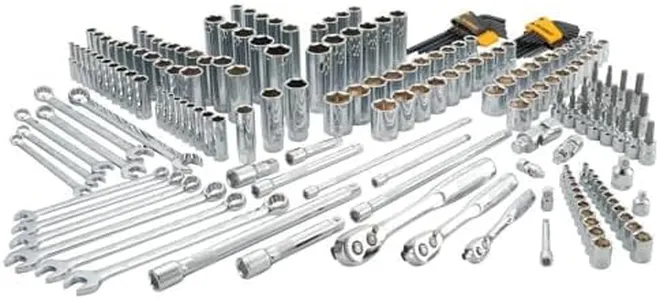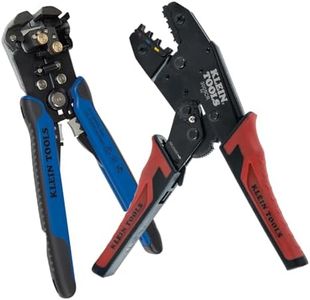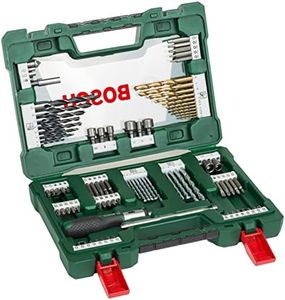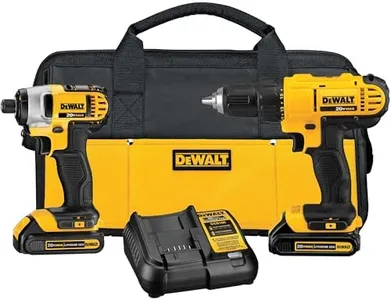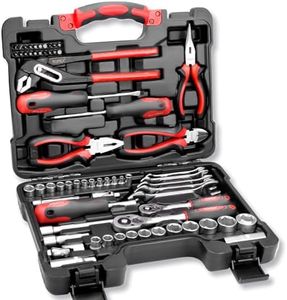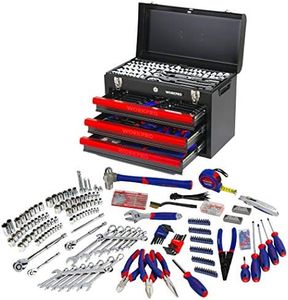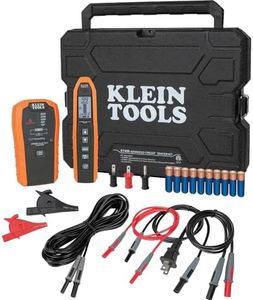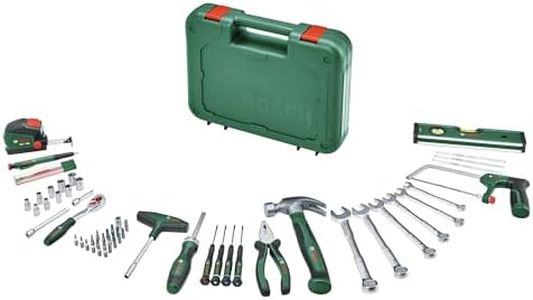We Use CookiesWe use cookies to enhance the security, performance,
functionality and for analytical and promotional activities. By continuing to browse this site you
are agreeing to our privacy policy
10 Best Tool Kits
From leading brands and best sellers available on the web.Buying Guide for the Best Tool Kits
Selecting the right tool kit can make all the difference when tackling repairs, home improvement, or DIY projects. The key is to think about what you need the kit for—occasional household fixes, automotive work, or more specialized tasks. When reviewing tool kits, pay attention to what comes in the set, the quality of each tool, and whether the assortment matches your needs. By focusing on a few core specifications, you'll be better equipped to buy a kit that saves you time, stress, and future trips to the hardware store.Tool SelectionTool selection refers to the types and range of tools included within the kit, such as screwdrivers, pliers, wrenches, sockets, and hammers. This spec is important because a kit missing the tools you need will not be as useful. Some kits offer only basic hand tools aimed at simple repairs, while others are more comprehensive, including multiple varieties and sizes within each tool type. If you only need tools for simple household jobs, a basic selection may be perfect. For more varied or demanding tasks, like automotive work or assembling furniture, a kit with a broader assortment will prevent you from having to buy additional tools later.
Build QualityBuild quality refers to the materials and construction of the tools in the kit. It's important because better-built tools are more durable, safer, and feel better to use. Tool quality can vary: entry-level kits may use softer metals that can bend or wear out, whereas higher-quality kits use durable alloys or chrome plating that stand up to heavy use. If you plan to use your tool kit often or for demanding tasks, prioritize build quality for longevity. For occasional home use, standard quality may be sufficient.
Number of PiecesThis spec states how many items the kit contains. It's key because a higher number generally means a greater variety but can also include lots of small or seldom-used items, like screws, bits, or adapters, that may not be essential. Starter kits typically contain 20 to 50 pieces, suitable for most home repairs, while larger kits may have over 100 pieces, ideal for broader needs or specialized tasks. Evaluate the piece count in context: more isn't always better if the extras aren't useful to you.
Type of Case or StorageThe type of case or storage deals with how the tools are organized and protected. This matters for easy access, portability, and making sure pieces don't get lost. Some kits come in sturdy hard cases with organized slots, while others include soft fabric rolls or simple boxes. If you need to move your kit often, look for secure, portable cases. For storage at home, a compact, organized box may suit best. Consider how and where you'll store and use your tools.
Specialty vs. General PurposeThis spec highlights whether the kit is tailored for a specific purpose—like mechanics, electronics, or bikes—or is intended for general use. Specialty kits include unique tools for certain jobs, while general-purpose kits have a variety of common household tools. If you know you'll be working mainly on cars or electronics, a specialty kit might meet your needs better. For homeowners or renters doing basic repairs, a general-purpose kit is usually the best fit.

